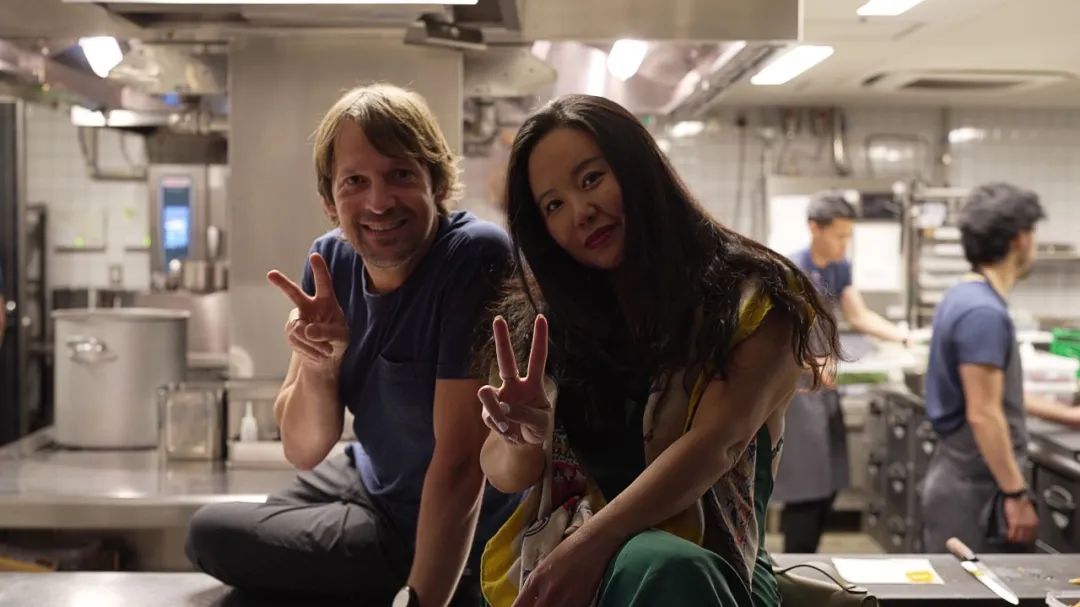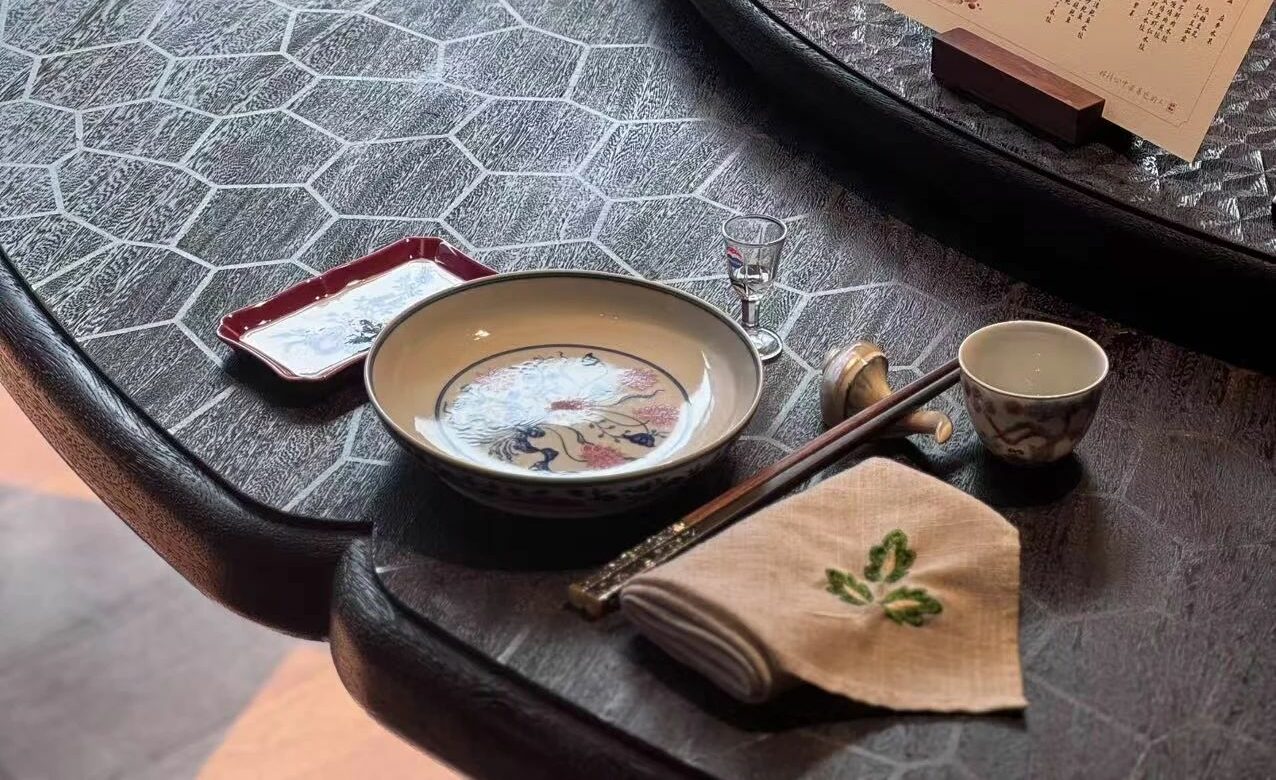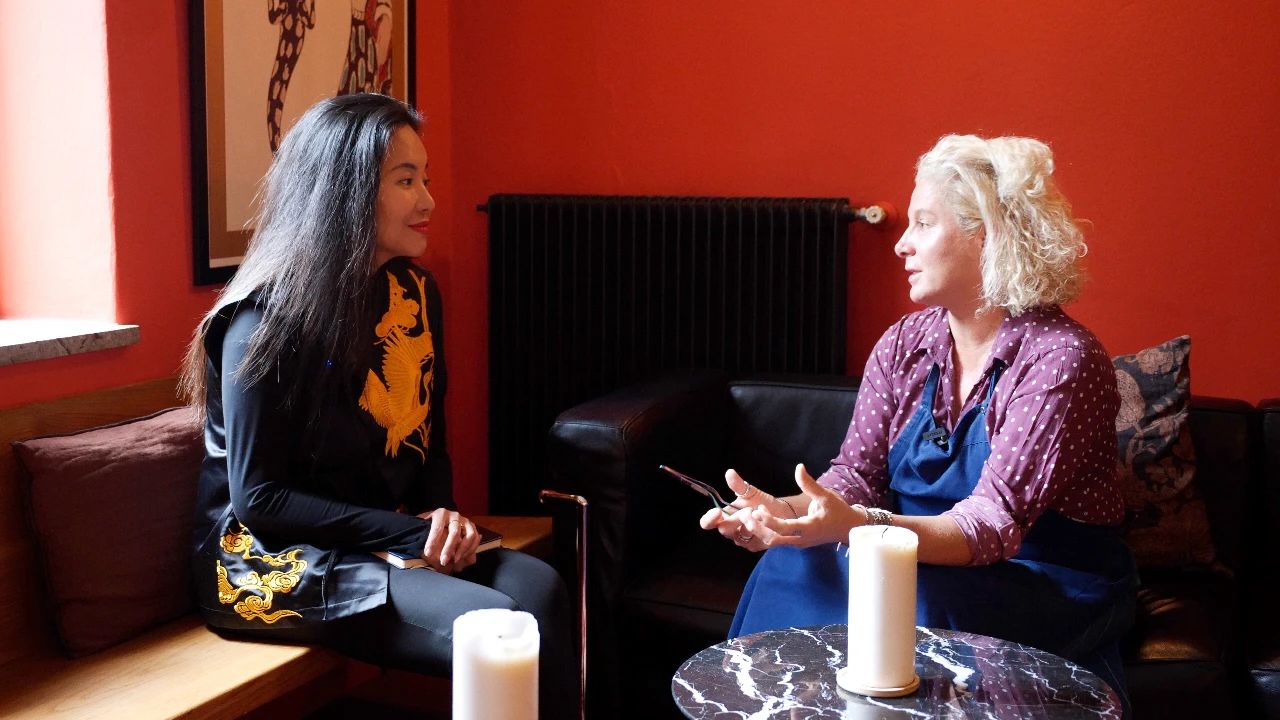The most common question I got on this visit to Noma Kyoto was: Is it good?
After 20 years of championing new Nordic cuisine, Chef René Redzepi has decided to transform Noma Copenhagen into a full-time food laboratory by the end of 2024. Those who want to have a taste of Noma’s avant-garde cuisine will have to follow up closely on periodic pop-ups held in the future.
@TastyTrip YouTube
 René Redzepi and Author
René Redzepi and Author
I visited Noma several times in the past, but I haven’t had a chance to go to Copenhagen for almost three years due to covid. Last year I heard that Noma was planning to do a pop-up, which later turned out to be in Kyoto, so I decided to visit this time. A mecca for its fans, Noma is as influential as Spain’s El Bulli which pioneered the culinary trend known as molecular gastronomy. Generations of chefs trained at Noma have travelled near and far to sow the philosophy of new Nordic cuisine, which has now taken root in places around the world.
Noma has operated pop-ups in Tokyo, Australia and Mexico, and this time it takes place at the Ace Hotel in Kyoto. It was by chance that René saw a photo on Instagram of the hotel, a 1926 building renovated and extended by Japanese architect Kengo Kuma. Renéasked if Noma could come to the hotel to do a pop-up and Noma Kyoto was finally decided after Japan announced lifting covid restrictions on foreign tourists.
 Noma Australia@reneredzepinoma_instagram
Noma Australia@reneredzepinoma_instagram
For the 10-week residency at the Ace Hotel, René brought a crew of 103 people. I was in Kyoto in March doing culinary research (catching up on my writing) when I saw the team getting off two tour buses. And I could recognise some familiar faces from the crowd: chef Kenneth Foong said he was very confident about the menu this season; that evening I also met Mario, a Chinese chef working at Noma. I was really looking forward to what Noma Kyoto has to offer.


To avoid tourist crowds, I came to Kyoto when the cherry blossom season was over and stayed at the Ace Hotel as well. The hotel has a very modern design, with some areas performing library functions to create a strong sense of community. It’s a concept of East meets West, an interplay of hippie culture and art of oriental architecture.
To better relate to the local cuisine, Noma Kyoto’s dining space is decorated with elements of kombu and dashi is frequently used in the dishes. Noma Copenhagen is surely no stranger to using seaweed during the seafood season though.



It’s been a few years since I wrote about Noma again, and I’ve really thought it through. The new Noma 2.0 cookbook contains dishes spanning two seasons, evoking memories of the past. As it has for years, the restaurant explores the possibilities of a full range of ingredients, presenting the best of them conveyed through an unimaginably elaborate process that is both wild and traditional, unpretentious but time-consuming. In the spirit of Noma 2.0, the Kyoto pop-up pays true homage to the city’s profound history and diverse culture, with local approach in ingredient selection, preparation and presentation.

 Hassun (八寸)
Hassun (八寸)

 Shabu-Shabu
Shabu-Shabu


 Cuttlefish and Whisky Vinegar/Shiro Ebi and Miso Crisp
Cuttlefish and Whisky Vinegar/Shiro Ebi and Miso Crisp
Tokushima bamboo shoots are cooked in miso broth, paired with corn & bonito sauce and placed in squid broth infused with jasmine tea. Tender tips of the bamboo shoots are so thinly sliced that I marveled: “It’s been a long time since I’ve tasted such tender bamboo shoots!” The use of jasmine tea is ingenious, contributing to this elegant, stunning dish.

 Bamboo Shoots in Squid Broth/Swordfish Belly
Bamboo Shoots in Squid Broth/Swordfish Belly
The tofu dish is a salute to Kyoto cuisine as well. Noma Copenhagen is well versed in tofu making. Here we have tofu made from mung bean soy milk and served with nasturtium, a common ingredient in Nordic cuisine, topped with shaved wild almonds for a layered texture and an elegant presentation.
A highly sought after fish found along the coastline of Hokkaido, the kinki fish (thornyhead) is marinated with miso and grilled until crispy outside and tender inside. It is incredibly juicy and elevated by an intense flavour of mayonnaise.

 Tofu and Wild Almonds/Kinki
Tofu and Wild Almonds/Kinki
With precise cooking time control, lotus root steak is slowly barbecued with juniper berry and porcini soy sauce to mimic the taste and texture of meat. The serving sauce is made from Yamato clams and egg yolk that carries a peppery aroma. The lotus root is already amazing on its own.

 Lotus Root Steak
Lotus Root Steak
Echoing the abundance of ferns harvested this time of year, Noma presents sansai (wild mountain vegetables) in fresh and grilled forms, beautifully presented on a platter and paired with tomalley miso sauce. A “Kyotoisation” of a classic Noma dish, or a “Nomalisation” of Kyoto sansei?
The main course features charcoal-smoked Ise ebi with sansho leaf and baby lime, underneath which is air-dried smoked pumpkin, sweetcorn and tomato in a kombu sauce. The perfectly cooked lobster is pure lusciousness.

 Mountain Vegetables(Sansai)/Ise Ebi
Mountain Vegetables(Sansai)/Ise Ebi
Lavishly topped with rose petals, the aromatic Kamameshi (Japanese iron pot rice) presents glutinous rice from Ishigaki Island (top rice producing area in Okinawa) cooked in ginseng tea and dashi and flavoured with rose vinegar and rose oil. The rice grains are cooked al dente and blend harmoniously with the rose. The dish is a testify that kamameshi can be charming in itself even without seafood.
For dessert, there is a yuzu smoothie presented in the form of shijimi clams. A subverted version of strawberry daifuku (mochi stuffed with strawberry), dried strawberry filled with mochi is coupled with roast sweet potato drizzled with amazake (Japanese fermented rice drink) and finished up with cream. Eggfruit is also topped with condensed amazake and has a similar texture to avocado that has won me over.


 Green rice and roses/Yuzu Shilimi Clams/Dried Strawberry and Mochi
Green rice and roses/Yuzu Shilimi Clams/Dried Strawberry and Mochi
The pairing sakes throughout the menu are all sourced from suburban regions of Kyoto, which is not an easy thing to do within such a short time. What is even more remarkable is that Noma does not show off its techniques to seek attention, nor does it go for extreme minimalism, but creates a unique dining experience with a menu that’s both inventive and rooted in Kyoto’s history and rich culinary traditions.


Summoning a team of more than 100 staff, Noma Kyoto is more than just a pop-up, and it’s not just about whether it tastes good or not. Although the food world is split on the plan of Noma Copenhagen turning into a food laboratory and will be open only for periodic pop-ups around the world to continue its ethos, Noma is an ever-learning organisation, dedicated to food innovation and the development of new flavours. The close of Noma as a full-time restaurant will only be the end of an old chapter, not the end of its pursuit of groundbreaking work in food.










